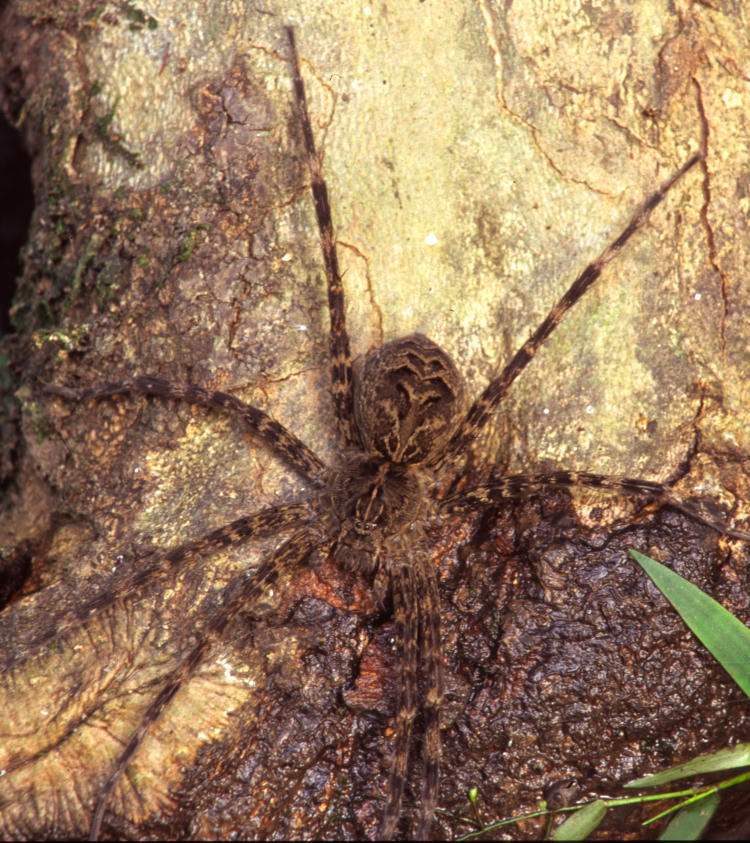
I have a special treat for you today – I mean, aside from this delightful image – in that you get to learn a little important history. What you see here is the first professional sale that I made, published in a magazine (ask your grandmother what those were.)
Well, it was similar to this, anyway – it might not have been this exact slide, and they certainly printed it way darker than this, but close enough. I was active on several photography newsgroups at the time (again, grandma,) and someone posted their need for images of both fishing spiders and water striders. The fishing spider bit I wasn’t too sure of, but I knew I could obtain water strider photos, and set off to my regular haunt at the head of the Neuse River to see if I could snag a few photos, including being prepared to bring home a few and do ‘studio’ shots. Not only did I photograph a few in situ, I managed to capture a couple (you try this sometime) and photographed them in closeup detail, with natural-looking background within a shallow dish of water in the window of my office. I sent these along to the magazine along with a few photos, like the one above, that I considered wolf spiders. In a few days they responded, wanting to know the two species represented, and I was forced to contact an entomologist at the local state university. Listen, it was 2001, and the internet was a mere innocent child then: finding useful information remained hit-or-miss, and BugGuide.net did not exist. The entomologist was very helpful and identified the spider as, indeed, a fishing spider, probably Dolomedes tenebrosus, but the water striders couldn’t be pinned down – as he told me, one needed to see the genitalia to be sure, and I admitted I did not get photographs that detailed or personal. I dutifully passed this on to the magazine, though a little more circumspectly.
And then… nothing. No contact about usage, no contract, no discussion of terms in the slightest – this is typically an avenue of negotiation between photographers and editors, and I had recently attended a seminar on just this kind of thing and was thus at least a little prepared. Weeks later, I was notified by my cousin that the magazine had indeed published the images, but I still hadn’t heard a word from them. I went out and got a few copies myself, and it was gratifying to see my images in print with my byline right there, but getting paid for them was also imperative. Weeks later, I was fast approaching my self-imposed deadline of contacting the magazine and demanding to know what they were doing, when my slides were all returned with a check for the usage. The amount was within going rates, so I was mollified – I’m trying to recall if they even sent me a complimentary copy or not. Typically, the publisher provides several for ‘tearsheets,’ the résumé of the photographer to be able to show off to potential clients. But yeah, the failure to obtain agreement over fees or extend a contract was not at all typical of professional usage.
All that said, where do we find ourselves now, in comparison? We’ll start with more recent images.
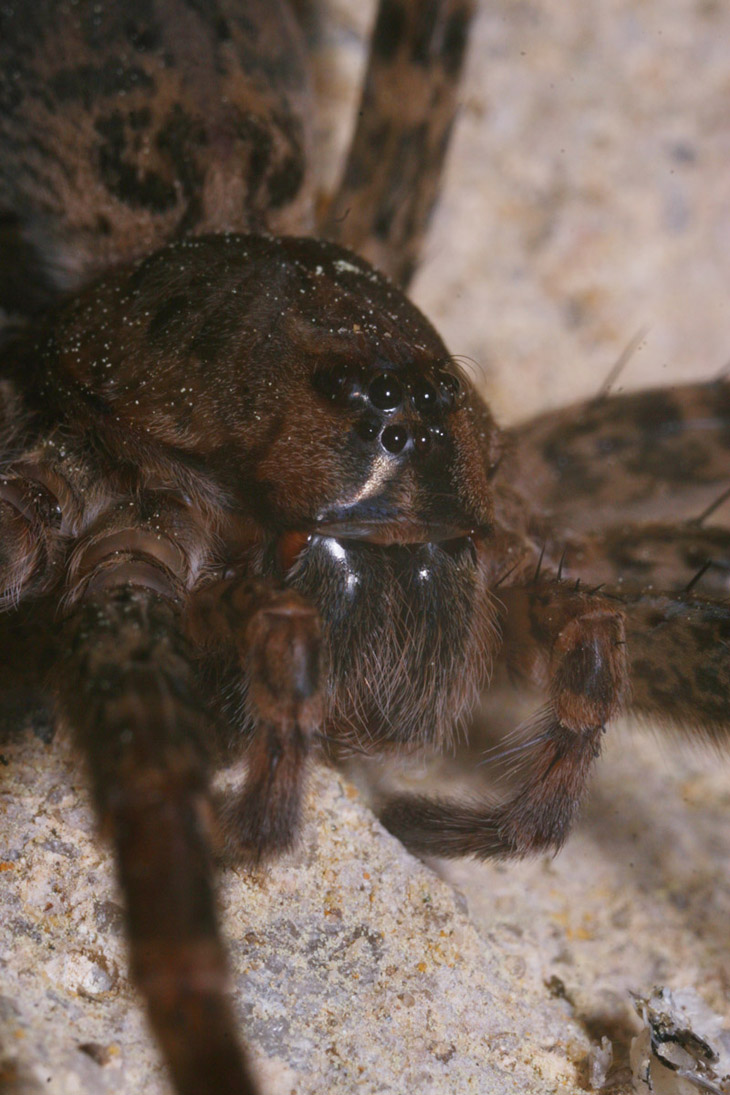
Same species, but this time at the side of my own pond here at Walkabout Estates, taken at night when the spider wasn’t fully aware of the danger because it was dazzled by the headlamp. For the record, this came from six years ago, still fifteen after that first publication. Yet we can do better than this.
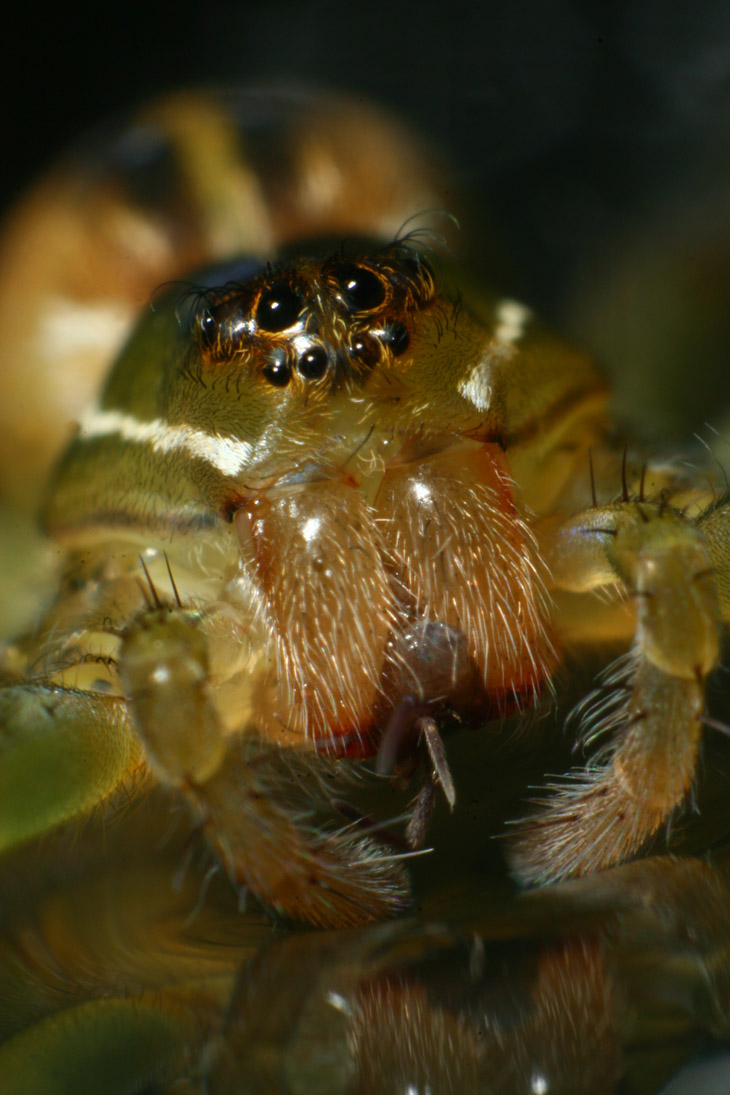
This is a year later in 2017, but more notable because of the size. You see, the first two above were both quite large – actually, freaking huge for North American spiders – both spanning across the legs about the width of your palm. This one is a juvenile Dolomedes triton, and I’ll let the illustrating image that I obtained of the same specimen speak for itself.
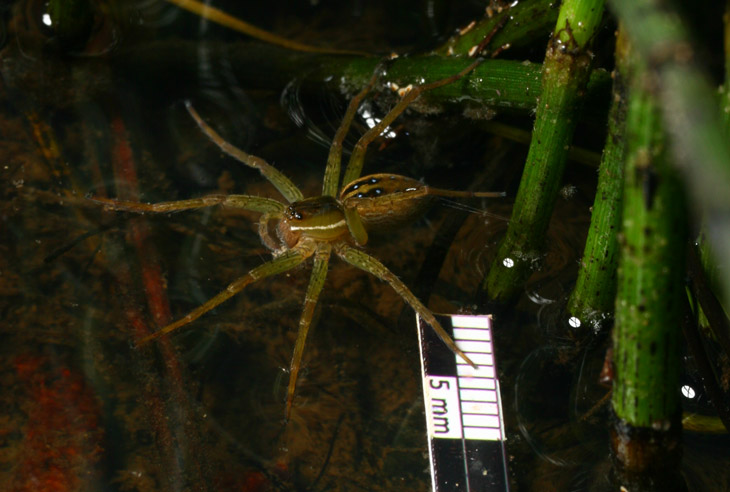
Clearly, we’re talking many times smaller now, so the ‘facial’ detail is something that I’m very pleased with. That portrait was also a studio shot, with a story in itself – I’m still a little surprised it went as well as it did.
“But did this start you on the road to a lucrative and well-published nature photography career, Al?” you ask breathlessly, and I enthusiastically reply, “Yeah right.” The publications have been few and far between, not at all helped by the radical change in media that the internet brought with it, as well as the near-collapse of paid photographers. Much as I’d like to report that the increase in image quality resulted in a commensurate increase in income, the reality is exactly the opposite. Fuck it all, anyway.
But while we’re here, we’ll take a look at the water strider photo that went along with it.
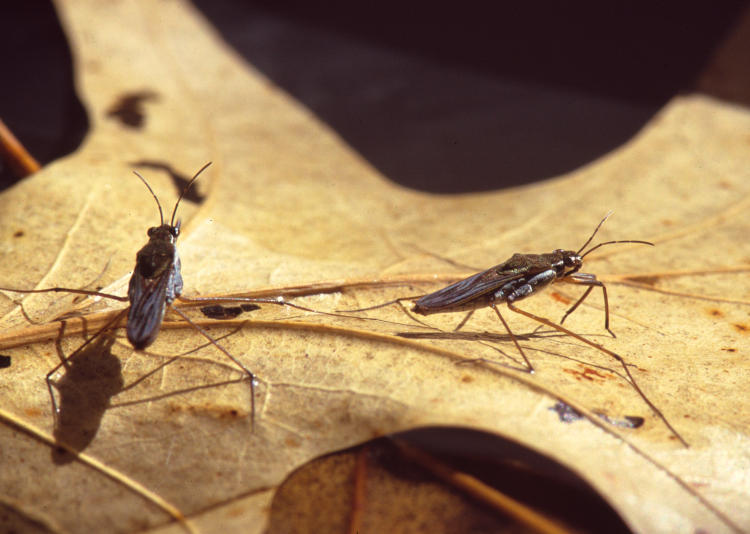
I can’t recall what the entomologist told me was the potential genus, and it may take quite a bit of research in BugGuide to come close, but you don’t care anyway. This is my studio shot, and it published much smaller than you’re seeing here (unless you’re using a phone to view this site, and why would you do something that silly?) Now let’s look at what they didn’t publish, even though I sent them sixteen slides, I believe.
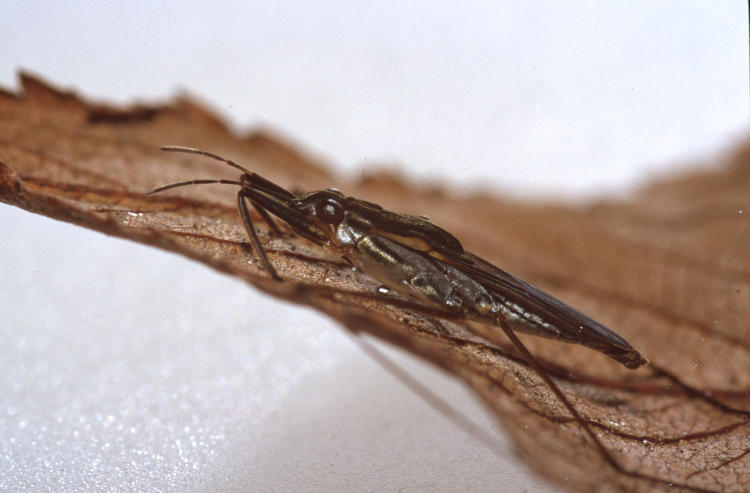
Granted, this is both more anatomical than an article on water gardens merited, and a little sterile in the background department, but a pretty good slide for my efforts in 2001, and I haven’t surpassed this with any related species, anyway. That’s full frame – we need a detailed look at it.
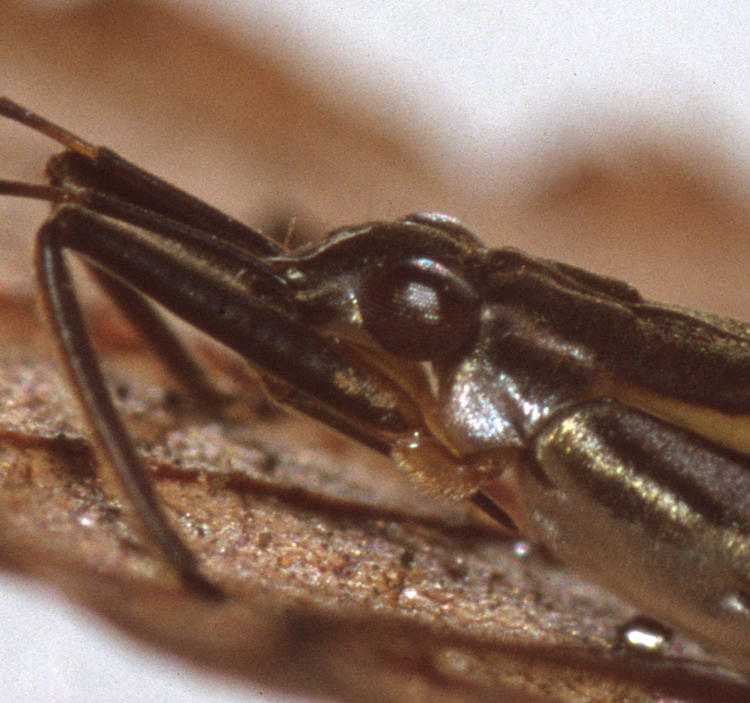
This is a fraction under the full resolution of the original slide, and you can just make out some of the eye facets. If you’re not familiar with water striders, their overall length might get as high as 20mm, usually 10-15, and that eye was likely a millimeter across, give or take. Not too shabby for the Sigma 105 macro and a 2x converter (I’m almost certain, anyway.)
These probably weren’t my first strider photos, and maybe not even the fishing spider, but certainly the first of both in detail. A few years earlier, I’d had an encounter with a fisher that was a little creepy. I was opening an outdoor well-head to check the connections on the pipe, and pulled a few bats of fiberglass insulation from around the head. As I lifted it out and casually turned it over, it revealed another massive fishing spider, again about the size of my palm, directly on the opposite side of the insulation from my hand. I knew that if the spider spooked, it would certainly run to the ‘underside’ where my hand was, and in my mildly arachnophobic state this was something that I sincerely wished to avoid – gingerly, I placed the insulation on the ground with no undue movements and thus avoided any contact. Not that it would have been anything but frightening to me, since fishers are harmless and quite unlikely to bite in such circumstances, but logic doesn’t hold sway against phobias. I’m happy to report, though, that these can be overcome with time and exposure.




















































